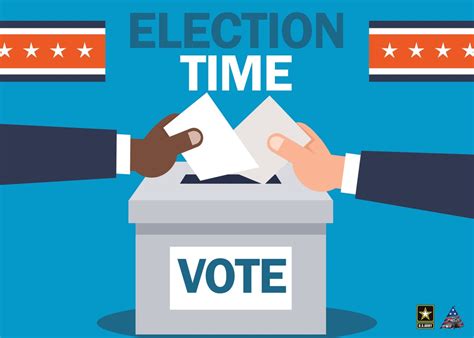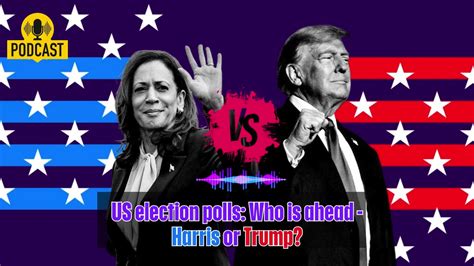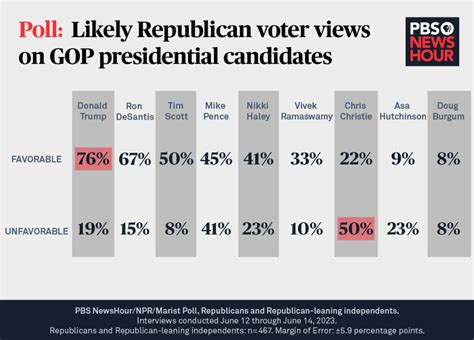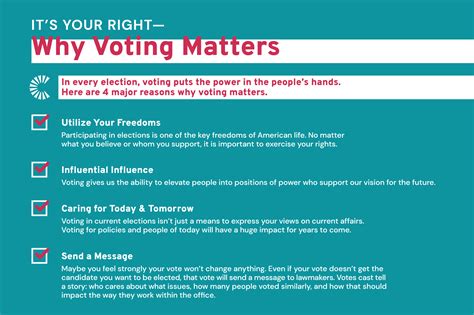Explore the significance of US election polls, their methodologies, trends, influencing factors, and the impact of social media on voter sentiment.In an era defined by rapid information exchange and evolving voter perspectives, understanding US election polls is more crucial than ever. They serve not only as a barometer for public sentiment but also play a vital role in shaping the democratic process. This article explores the complexities of US election polls—examining their significance, the methodologies behind them, and the trends they reveal from past elections. We will also delve into the factors influencing voter sentiment and the increasingly important role social media plays in shaping public opinion. By understanding these elements, voters can gain a clearer insight into the political landscape, making informed decisions as they participate in the democratic process.
Importance Of US Election Polls In The Democratic Process
US Election polls play a critical role in the functioning of a healthy democracy. They serve as a barometer for public opinion, allowing candidates, parties, and political analysts to gauge voter sentiment leading up to elections. This process not only shapes campaign strategies but also helps to inform the electorate about where different candidates stand on key issues.
Moreover, US election polls contribute to transparency in the political process. By regularly surveying a diverse cross-section of the population, these polls provide insights into the priorities and concerns of voters, fostering a more informed electorate. This information can motivate participation in the democratic process, as voters become more aware of the choices available to them.
Additionally, polling data can help to identify trends and shifts in public opinion over time. For example, significant changes in voter preferences can signal emerging issues that candidates need to address. Understanding these dynamics is essential for both candidates and voters, as it can affect the overall direction of policy and governance.
The importance of US election polls lies in their ability to reflect the will of the people, ensure candidates remain accountable to their constituents, and enhance the informed participation of voters in the democratic process.
How Polling Methodologies Impact US Election Results
The methodologies used in conducting US Election polls play a crucial role in determining the accuracy and reliability of the results. Different polling techniques can yield varying outcomes, impacting the predictions made about election results. Here are some key aspects of how these methodologies influence US Election results:
| Methodology | Description | Impact on Results |
|---|---|---|
| Random Sampling | Involves selecting participants randomly to represent the larger population. | Increases reliability, yielding more accurate results. |
| Stratified Sampling | Participants are divided into subgroups (strata) based on characteristics like age, gender, or race. | Ensures diverse representation, particularly important in close races. |
| Online Polling | Collects data via online platforms, often using social media or web surveys. | Can lead to sampling biases if the demographic is not representative of the general population. |
| Telephone Polling | Traditionally conducted via landlines, although increasingly using cell phones. | Effective for reaching older demographics but might miss younger voters who use mobile phones exclusively. |
| Exit Polls | Conducted on Election Day, asking voters about their choices as they leave the polls. | Provide immediate insights but can be misleading if voter demographics shift significantly. |
The choice of methodology also affects the interpretation of US Election polls. For instance, if a poll over-represents a particular demographic, the results may not reflect the overall electorate accurately. Furthermore, the timing of polls is equally vital; polls conducted too early may not capture late-breaking developments that could sway voter sentiment.
Understanding the various polling methodologies sheds light on their strengths and weaknesses. This knowledge enables voters, analysts, and political strategists to assess the relevance of US Election polls in predicting outcomes and shaping campaign strategies.
Analyzing Trends: What Past US Election Polls Reveal
Understanding the trends revealed by past US Election polls is crucial for interpreting current voter sentiment and predicting future outcomes. Historical data provides a lens through which we can view shifts in public opinion, party loyalty, and the impact of significant national events. By analyzing these trends, we can gain insights into electoral behavior and strategies.
One notable trend is the fluctuation in party preference over the decades. For example, polls from the late 20th century indicate a strong Democratic hold, while recent decades have seen a rise in Republican support in various elections, showcasing the evolving political landscape of the nation. This is often influenced by major political events, such as economic crises or international conflicts, which can sway public opinion.
Additionally, demographic shifts have shown significant influence in US Election polling data. Changes in the makeup of the electorate, such as age, ethnicity, and education levels, have altered how candidates engage with voters. For instance, younger voters often prioritize issues such as climate change and social justice, which can change the overall focus of campaign strategies.
Moreover, polling methodology itself has evolved, affecting the way trends are captured and interpreted. Traditional telephone surveys have given way to online polling methods, which may better capture the views of younger and more tech-savvy voters. It’s essential to assess not just the numbers, but the methods behind them to understand what they truly represent.
The interpretation of trends from past US Election polls can also provide guidance for future candidates. Understanding what resonated with voters in previous elections can help shape campaign messages and outreach efforts. In conclusion, analyzing historical polling trends provides a deeper insight into the factors that drive electoral success, making it an invaluable tool for political strategists and candidates alike.
Factors Influencing Voter Sentiment In US Elections
Understanding the dynamics of voter sentiment is crucial in predicting outcomes during US elections. Various factors play a significant role in shaping how voters perceive candidates and policies. Here are some key influences:
- Political Climate: The current political environment can sway voter sentiment. Events such as legislative changes, Supreme Court decisions, or major political scandals often impact how voters feel about specific candidates or parties.
- Economic Conditions: Voter sentiment is closely linked to the state of the economy. High unemployment rates or inflation can lead to dissatisfaction with incumbents, prompting voters to seek alternatives.
- Media Influence: The portrayal of candidates across various media platforms shapes public perception. Coverage by traditional media and social media narratives significantly affects how voters interpret candidates’ actions and statements.
- Demographic Shifts: Changes in the demographic makeup of the electorate can influence voter sentiment. Factors such as age, race, and socioeconomic status can shift priorities and concerns among voters.
- Campaign Messaging: The effectiveness of a campaign’s messaging can sway voter opinions. Candidates who communicate effectively with clear, relatable messages are more likely to resonate with the electorate.
- Peer Influence: Social circles also play a role. Voters often discuss elections with friends or family, which can alter their perceptions and decisions at the polls.
- Social Issues: Topics such as health care, education, immigration, and climate change can heavily weigh on voter preferences, especially if candidates take strong stances on such issues.
The factors influencing voter sentiment in US elections are multifaceted and interconnected. By understanding these elements, campaign strategists and political analysts can better gauge voter reactions and tailor their messages accordingly.
The Role Of Social Media In Shaping US Election Polls
In today’s digital age, social media platforms have emerged as powerful tools that significantly influence the landscape of US Election polling. The ability to disseminate information rapidly and engage with a broad audience allows candidates, political parties, and advocacy groups to shape public perception and voter sentiment more effectively than ever before.
One of the most significant impacts of social media on US Elections is its role in amplifying messages. Candidates can directly communicate with voters, bypassing traditional media filters. This immediacy enables them to respond to events, controversies, and trending topics in real-time, which can swiftly alter polling data and public opinion.
Furthermore, social media platforms provide an avenue for grassroots movements to gain traction. Viral moments can accelerate voter mobilization efforts, leading to increased engagement and potentially shifting polling numbers. For instance, a memorable campaign video or a trending hashtag can resonate with millions, making it a pivotal factor in shaping perceptions leading up to an election.
However, the influence of social media is not without challenges. Misinformation and disinformation can spread just as rapidly, creating a toxic environment that clouds voter judgement. This phenomenon can lead to skewed perceptions of candidates and issues, which might not be reflected in traditional polling methods. Therefore, it’s crucial for voters to critically evaluate information circulating on these platforms.
As we analyze the role of social media in US Election polling, it becomes evident that while it is a valuable tool for engagement and communication, it also raises concerns regarding the integrity of the information being consumed. Understanding this duality is essential for both voters and pollsters as they navigate the complexities of modern electoral politics.
Frequently Asked Questions
What are US election polls and why are they important?
US election polls are surveys that measure public opinion on candidates, issues, and voter preferences before elections. They are important as they provide insight into the electoral landscape and can influence campaign strategies.
How are US election polls conducted?
Election polls are typically conducted through various methods including telephone interviews, online surveys, and in-person polling. Pollsters often use a random sampling method to ensure that the sample represents the population.
What are the different types of polls conducted in US elections?
There are several types of polls, including tracking polls, which monitor changes in public opinion over time, exit polls, which gather data from voters after they leave polling stations, and approval rating polls, which assess how the public views elected officials.
How accurate are election polls?
The accuracy of election polls can vary depending on factors such as sample size, methodology, and timing. While many polls strive to be accurate predictors of election outcomes, margins of error and biases can lead to discrepancies.
What factors can influence polling results?
Polling results can be influenced by various factors, including current events, media coverage, demographic changes, social media trends, and voters’ emotional responses to candidates and their campaigns.
Why do some polls show different results for the same election?
Different polls may show varying results due to differences in their methodologies, sample sizes, and demographics. Additionally, the timing of when the poll is conducted can also affect the results.
How can voters interpret the results of election polls?
Voters should approach election polls with a critical eye, considering the sample size, method of data collection, margin of error, and whether the poll has been conducted by a reputable organization. It’s also important to look at trends over time rather than focusing solely on a single poll.








